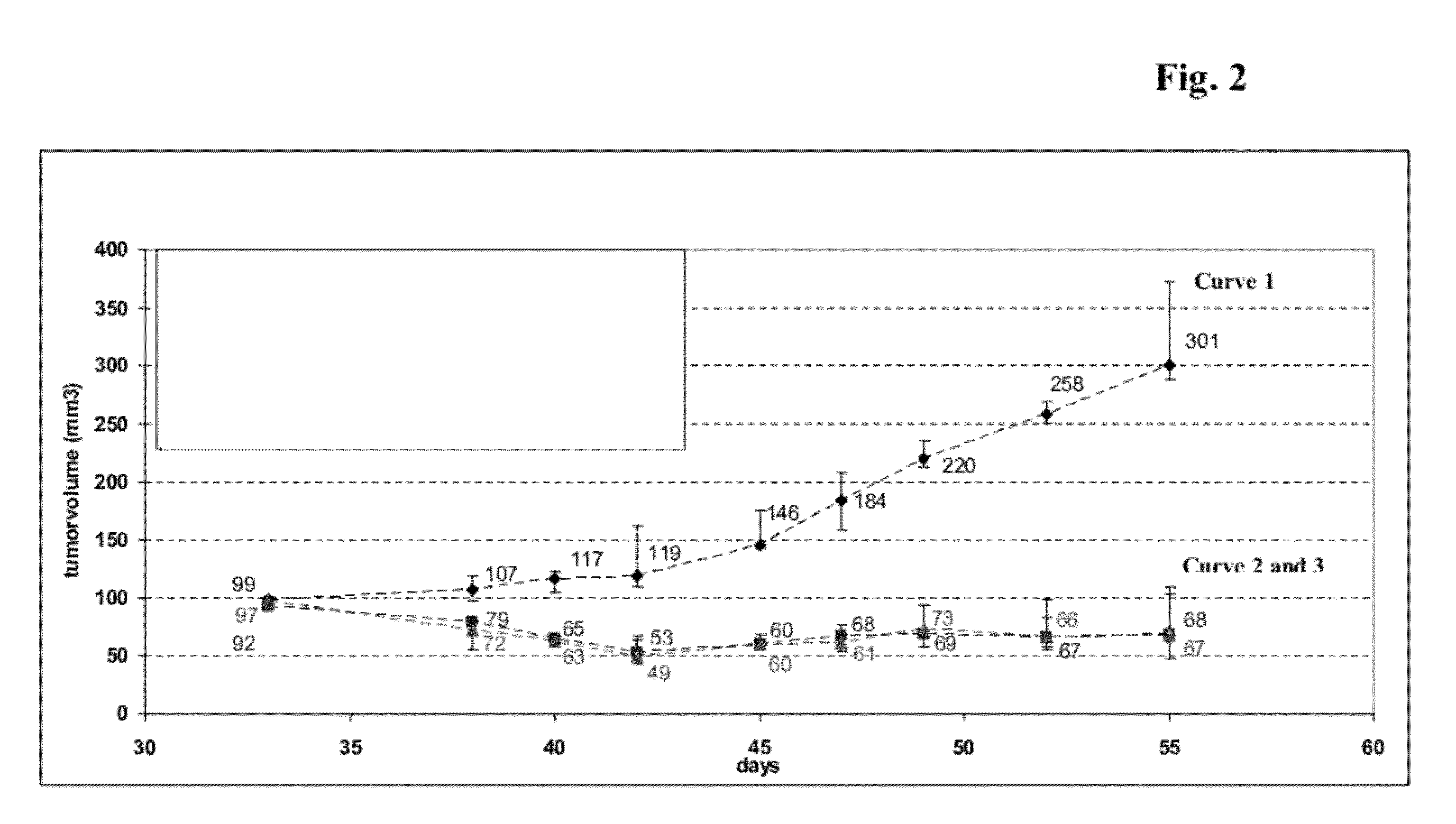Antibodies Against Insulin-Like Growth Factor I Receptor and Uses Thereof
a technology of insulinlike growth factor and antibody, which is applied in the field of antibodies against human insulinlike growth factor i receptor, can solve the problems of not being useful for human patients without, and the art of treatment, and achieve the effects of avoiding the inhibitory effect, enhancing the cell-mediated effector function of monoclonal antibodies, and increasing the in vitro adcc activity of antibodies
- Summary
- Abstract
- Description
- Claims
- Application Information
AI Technical Summary
Benefits of technology
Problems solved by technology
Method used
Image
Examples
example 1
[0119]Determination of the Affinity of Anti-IGF-IR Antibodies to IGF-IR
Instrument: BIACORE® 3000
Chip: CM5
[0120]Coupling: amine coupling
Buffer: HBS (HEPES, NaCl), pH 7.4, 25° C.
[0121]For affinity measurements anti human FCγ antibodies (from goat) have been coupled to the chip surface for presentation of the glycol engineered antibody against IGF-IR. IGF-IR extracellular domain was added in various concentrations in solution. Association was measured by an IGF-IR-injection of 2 minutes; dissociation was measured by washing the chip surface with buffer for 3 minutes. The affinity data for antibodies 18 and 22 are shown in Table 3.
TABLE 3Affinity data measured by SPR (BIACORE ® 3000)Antibodyka (1 / Ms)kd (1 / s)KD (M)No. 11.98 × 1052.02 × 10−41.02 × 10−9No. 21.86 × 1052.68 × 10−41.44 × 10−9
example 2
[0122]Determination of Antibody Mediated Effector Functions by Anti-IGF-IR HuMabs
[0123]In order to determine the capacity of the generated HuMAb antibodies to elicit immune effector mechanisms antibody-dependent cell cytotoxicity (ADCC) studies were performed. To study the effects of the antibodies in ADCC, H322M, DU145 or other suitable IGF-IR expressing cells (1×106 cells / ml) were labeled with 1 μl per ml BATDA solution (Perkin Elmer) for 25 minutes at 37° C. in a cell invubator. Afterwards, cells were washed four times with 10 ml of RPMI-FM / PenStrep and spun down for 10 minutes at 200×g. Before the last centrifugation step, cell numbers were determined and cells diluted to 1×105 cells / ml in RPMI-FM / PenStrep medium from the pellet afterwards. The cells were plated 5,000 per well in a round bottom plate, in a volume of 50 μl. HuMAb antibodies were added at a final concentration ranging from 25-0.1 μg / ml in a volume of 50 μl cell culture medium to 50 μl cell suspension. Subsequently...
example 3
Analysis of Glycostructure of Antibody
[0125]For determination of the relative ratios of fucose- and non-fucose (a-fucose) containing oligosaccharide structures, released glycans of purified antibody material were analyzed by MALDI-Tof-mass spectrometry. For this, the antibody sample (about 50 μg) was incubated over night at 37° C. with 5mU N-Glycosidase F (Prozyme# GKE-5010B) in 0.1M sodium phosphate buffer, pH 6.0, in order to release the oligosaccharide from the protein backbone. Subsequently, the glycan structures released were isolated and desalted using NuTip-Carbon pipet tips (obtained from Glygen: NuTip1-10 μl, Cat.Nr#NT1CAR). As a first step, the NuTip-Carbon pipet tips were prepared for binding of the oligosaccharides by washing them with 3 μL 1M NaOH followed by 20 μL pure water (e.g. HPLC-gradient grade from Baker, #4218), 3 μL 30% v / v acetic acid and again 20 μl pure water. For this, the respective solutions were loaded onto the top of the chromatography material in the ...
PUM
| Property | Measurement | Unit |
|---|---|---|
| volume | aaaaa | aaaaa |
| volume | aaaaa | aaaaa |
| concentration | aaaaa | aaaaa |
Abstract
Description
Claims
Application Information
 Login to View More
Login to View More - R&D
- Intellectual Property
- Life Sciences
- Materials
- Tech Scout
- Unparalleled Data Quality
- Higher Quality Content
- 60% Fewer Hallucinations
Browse by: Latest US Patents, China's latest patents, Technical Efficacy Thesaurus, Application Domain, Technology Topic, Popular Technical Reports.
© 2025 PatSnap. All rights reserved.Legal|Privacy policy|Modern Slavery Act Transparency Statement|Sitemap|About US| Contact US: help@patsnap.com


